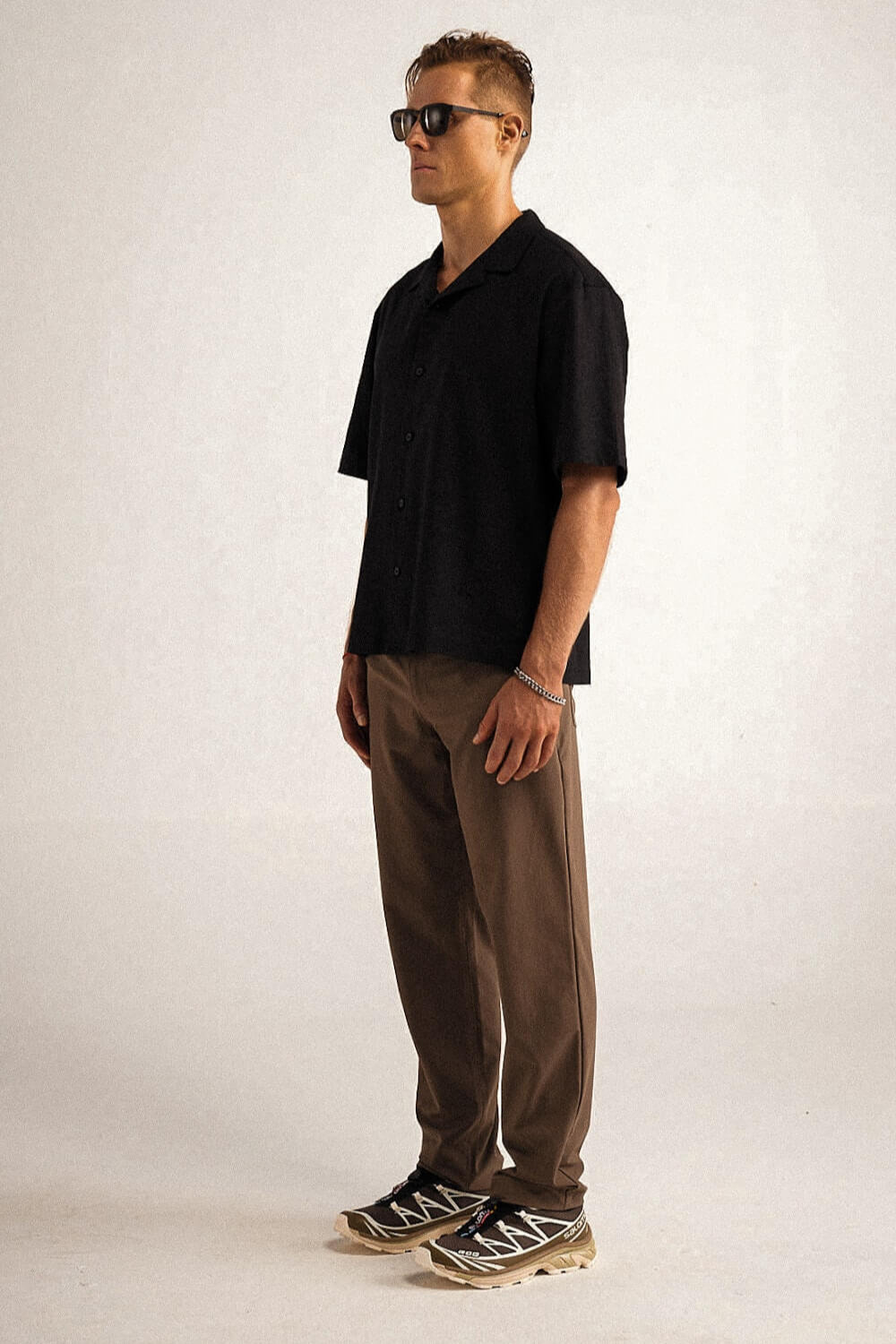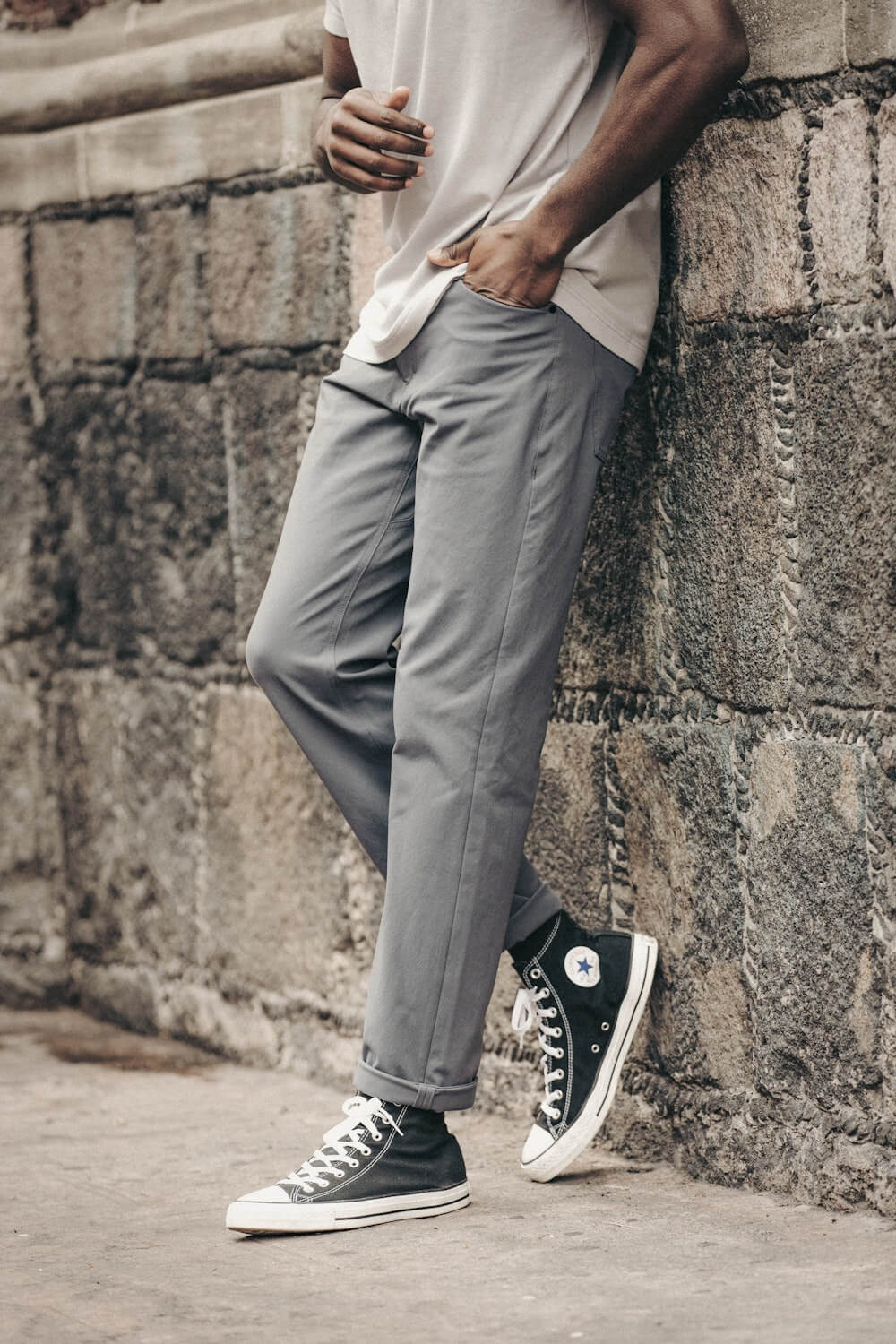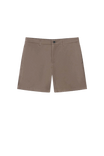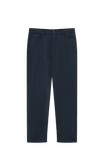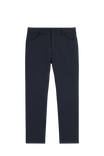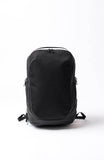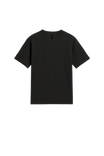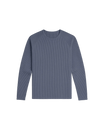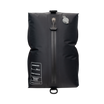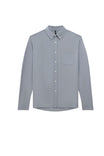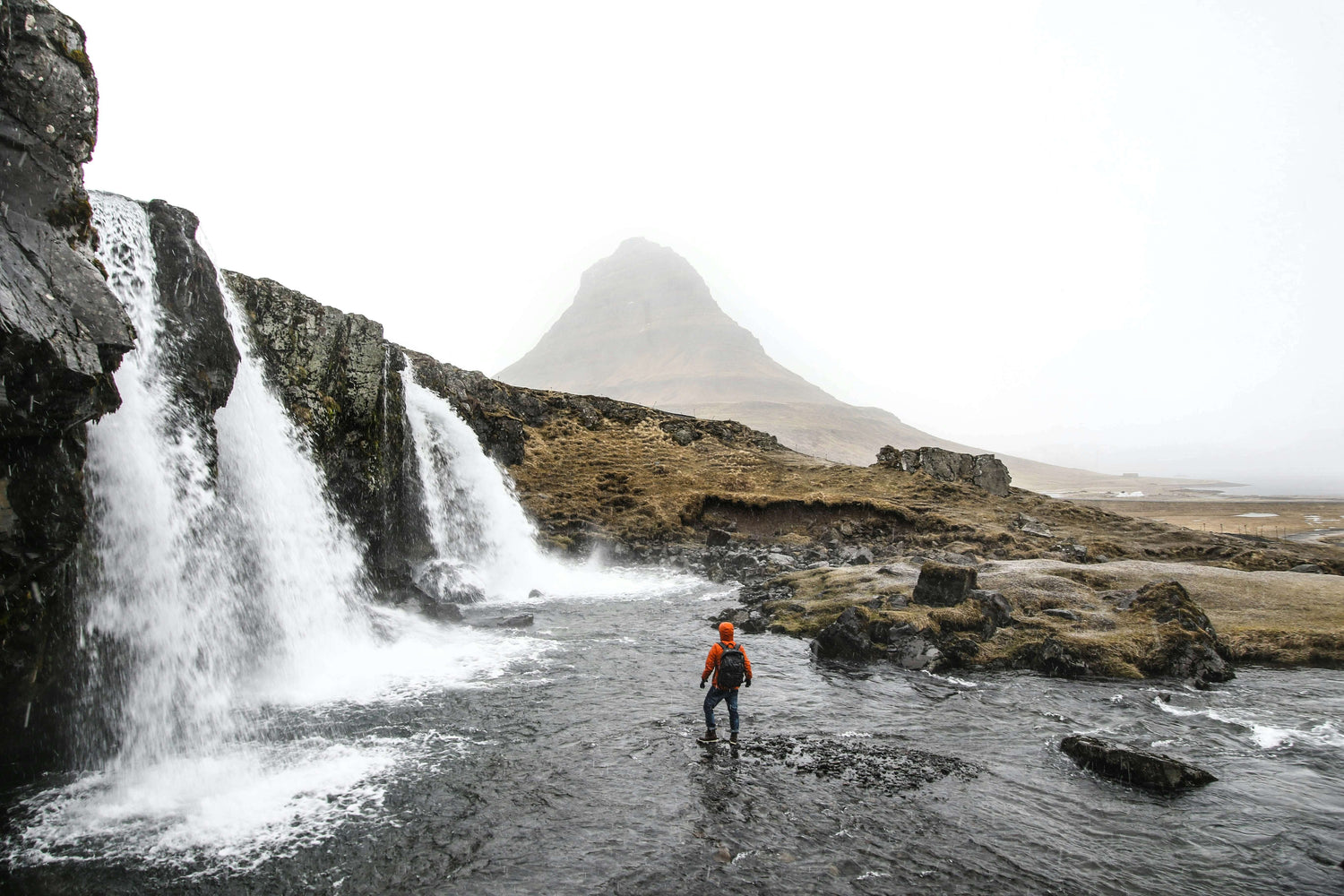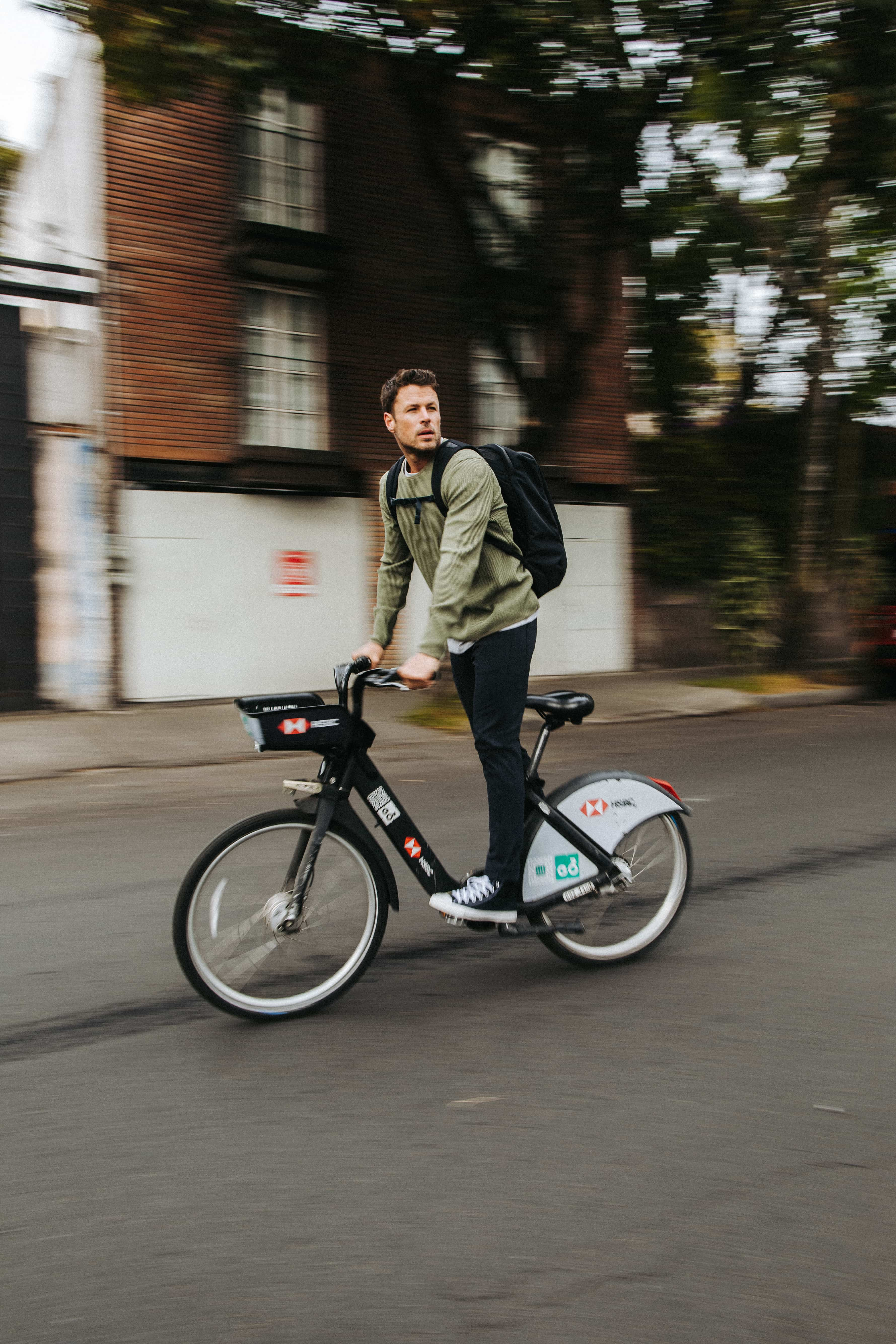First things first: Iceland isn’t the kind of place you just show up to unprepared. The weather shifts, the landscapes demand respect, and the right gear makes all the difference between a good trip and a great one. We’ve been there—shoulders braced against the wind, hiking through misty rain, soaking in hot springs under a midnight sun.
That’s why we’ve pulled together everything we’ve learned, starting from what to wear in Iceland, how to pack smart, and the small, ending with often-overlooked essentials that keep you ready for whatever this wild, otherworldly island throws your way.

How to Dress for Iceland: The TL;DR
Alright, let’s cut through the noise—dressing for Iceland isn’t about fashion week. It’s about staying warm, dry, and blending in with the locals who know how to outsmart some of the planet’s most unpredictable weather. The good news? You can do all that without overpacking or looking like you're on an Everest expedition (unless you actually are). Here’s the TL;DR on how to dress smart, stay comfortable, and pack light for Iceland:
The Iceland Dress Code: Functional, Minimalist, and Practical
Icelandic style is all about purpose over polish. Locals dress for the environment—clean, functional, and weather-ready—whether they’re grabbing a coffee in Reykjavik or heading out into the countryside. It’s not flashy, but it’s sharp. Think neutral tones, minimal layers, and gear that works. In Reykjavik, dark jeans, simple trousers, and a good jacket blend right in. Out in nature? It’s all about weatherproof, durable layers that can take on the wind and rain. Iceland doesn’t have a formal dress code, but people do dress with intention. If it doesn’t handle the elements, it probably doesn’t belong in your suitcase.
How to Dress for the Weather
Let’s be clear—the weather in Iceland is famously unpredictable. It can feel like four seasons in a single day: sunshine, rain, wind, even snow. That’s why layering is non-negotiable:
- Base Layer: Start with thin wool or synthetic layers. Merino wool is ideal—warm, breathable, and odor-resistant (bonus for rewearing). Just say no to cotton—it soaks, it chills, it’s not your friend here.
- Mid Layer: Fleece, wool sweaters, or a light insulated jacket will trap heat without the bulk. This is where your warmth really comes from.
- Outer Layer: Waterproof and windproof. There’s a difference between water-resistant and waterproof—trust us, in Iceland, it matters. Look for a jacket that can handle sideways rain and gusty winds.
For your legs, pack waterproof pants or at least quick-drying travel pants. Take a pair of rain pants, which are worth their weight in gold, near waterfalls or during heavy showers.
What to Wear in Reykjavik
In Reykjavik, you’ll see a clear divide—locals dress sharp and city-casual, not like they’re about to hike a glacier. Stick to clean, functional clothing: dark jeans or trousers, minimal layers, and a good jacket. Avoid showing up in full mountaineering gear at the café—save the rain pants and hiking boots for outside the city.
Pro tip: All-black outfits help you blend right in with the locals. Icelanders love their neutral tones.
Shoes for Iceland
Footwear can make or break your trip. Opt for waterproof hiking boots or sturdy sneakers with good traction. Trails, lava fields, and even city sidewalks can be slippery or wet. Leave the fancy shoes at home—you won’t need them. And as always, wool or synthetic socks only—cotton will betray you the minute things get damp.
What You Should Not Wear in Iceland
- Purely Cotton Layers: They soak up water and hold the chill—just avoid them.
- Jeans for Outdoor Adventures: Wet denim stays wet. Keep jeans for dry city days only.
- Heavy, Bulky Coats: Layering is better. A massive puffer jacket will leave you sweating in the car and freezing on the coast.
- Umbrellas: Useless in Icelandic wind. Your jacket’s hood is your best friend.
Packing for Iceland isn’t about extremes, but it’s about smart, adaptable layers that handle the changing forecast. For your luck, we’re breaking down exactly what to wear in Iceland by season, because what works in July isn’t the same story in November. Let’s start with summer, which just so happens to be now.
What to Wear in Iceland in Summer
Summer in Iceland is a season of long days (we’re talking nearly 24 hours of daylight!) and temperatures hovering between 10°C and 15°C (50°F to 59°F). While the midnight sun makes it feel like an endless adventure, the weather still loves to throw in a mix of wind, rain, and occasional chills. Packing layers is still key, but with lighter, more breathable options to keep you comfortable while exploring Iceland’s lush landscapes, sparkling waterfalls, and iconic glaciers.
- 2-3 Lightweight Base Layers (Merino Wool or Synthetic): Iceland’s weather keeps you guessing—even summer mornings can be brisk, especially on early hikes around Sólheimajökull Glacier or Fjaðrárgljúfur Canyon. Merino remains the go-to for temperature control, synthetics dry fast after active days, and our X Cotton Tee is the perfect everyday option—soft, breathable, and built to handle everything from the trail to town.
-
1-2 Quick-Dry Shirts or Polo Shirts (Merino or Performance Blends):
Perfect for layering or wearing solo on milder afternoons while wandering Reykjavik’s streets or picnicking near Goðafoss Waterfall. Our X Cotton Polo keeps things casual yet sharp, soft, breathable, and built with a touch of stretch so it holds its shape from flight to dinner.

-
1 Dress Shirt or Button-Down: For when you want to elevate your look without sacrificing comfort. The Limitless Merino Short Sleeve Shirt is built for exactly that—polished enough for dinner or drinks in Reykjavik, tough enough to handle Iceland’s unpredictable weather.
- 1-2 Lightweight Fleece or Sweaters: Great for staying cozy during puffin spotting at Dyrhólaey Peninsula or taking a boat ride around Jökulsárlón Glacier Lagoon. Opt for thin but warm materials that pack easily such as our comfortable hoodie made from unique waffle fabric.
- 1 Waterproof Shell Jacket (with a Hood): Designed to handle Iceland's quick summer showers, our Meta Shell is a lightweight and breathable rain jacket that is perfect for exploring the Golden Circle or marveling at Gullfoss Waterfall. Its packable design ensures you’re ready for sudden weather changes.
- 1 Pair of Lightweight Hiking Pants: Evolution Pant Slim is a quick-drying, water-resistant pants that are a go-to for summer treks up Kirkjufell Mountain or leisurely walks through Þingvellir National Park. Their four-way stretch ensures comfort on uneven terrain, while their minimalist design works for both outdoor and casual wear.
- 2-3 Pairs of Wool or Synthetic Socks: Wool socks aren’t just for winter—they’re perfect for keeping your feet comfortable and dry during long summer hikes or coastal walks.
- 1 Pair of Waterproof Hiking Shoes or Trail Runners: Lighter, breathable options work well for summer’s milder weather.
- 1 Wide-Brimmed Hat or Cap: The midnight sun might be beautiful, but it’s also bright. A sun cap will shield your face during sunny walks at Diamond Beach or while visiting Skógafoss Waterfall.
- 1 Buff or Neck Gaiter: Even in summer, Iceland’s winds can surprise you. A buff adds lightweight protection for cooler evenings or breezy boat rides.
- 1-2 Swimsuits: Opt for hybrid shorts that doubles as swimwear and casual wear, perfect for transitioning from soaking in geothermal pools to exploring nearby trails. Its water-repellent and quick-drying properties mean you’re ready for anything.
- 1 Pair of Sunglasses: A must for dealing with the reflective glow of the sun on glaciers and water. Look for polarized lenses for better visibility at spots like Jökulsárlón Lagoon.
Summer in Iceland might be warmer, but it’s just as unpredictable as ever. With this list, you’ll be ready to soak up every golden hour, windy cliff, and sunny hike without missing a beat!

What to Wear in Iceland in Winter
Heading to Iceland for a 5-day winter adventure? With temperatures ranging from -5°C to 5°C (23°F to 41°F) and weather that can flip between snow, rain, and fierce winds, packing the right gear is essential. Whether you’re hiking icy trails at Sólheimajökull Glacier, soaking in the Blue Lagoon, or wandering Reykjavik’s colorful streets, here’s exactly what you’ll need to stay warm, dry, and ready for every adventure.
- 3-4 Thermal Base Layers (Wool or Synthetic): Merino Wool long-sleeve tees that are ideal for base layering. The natural properties of merino wool wick moisture, regulate temperature, and resist odors—perfect for hiking Þingvellir National Park or glacier trekking at Jökulsárlón Lagoon.

- 2-3 Quick-Dry Shirts: Merino Tees or X Cotton Short-Sleeve Tees are excellent for layering. These quick-dry, breathable shirts are perfect for active days and transition easily into casual settings, saving you packing space while staying functional.
- 2 Insulating Mid-Layers: The Venture Zip Hoodie from Western Rise is an excellent insulating mid-layer. Made with breathable insulation, it provides warmth without bulk, perfect for outdoor activities like exploring Skógafoss Waterfall or staying warm while spotting the Northern Lights at Kirkjufell Mountain. Its packable design makes it a space-saver in your luggage.
- 1 Waterproof Shell Jacket: For rainy or windy adventures at Gullfoss Waterfall or Dyrhólaey Peninsula, the hooded jacket is a standout choice. This lightweight shell is water- and wind-resistant, with a tailored fit and reliable hood to shield you from the elements. Its durable yet sleek design ensures you stay protected and warm while looking stylish.

- 1 Pair of Waterproof Pants: Diversion Pants are water-resistant and durable, perfect for navigating snowy trails or staying dry during beach hikes at Reynisfjara Black Sand Beach. These pants feature adjustable cuffs and four-way stretch for ultimate mobility and comfort.
- 3-4 Pairs of Thermal or Wool Socks: Wool socks are a must for the Iceland trip. Pack extra to avoid soggy feet.
- 1-2 Pairs of Waterproof Gloves: Insulated, waterproof gloves will keep your hands warm while snapping photos at Seljalandsfoss Waterfall or handling gear during glacier hikes.
- 1 Wool Hat + 1 Buff or Neck Gaiter: For headgear, choose a Merino Wool Beanie. A buff or neck gaiter offers additional protection against Iceland’s brisk winds and is lightweight to pack.

- 1 Pair of Waterproof, Insulated Boots: Sturdy boots are crucial for long walks near Sólheimajökull Glacier or icy paths around Fjaðrárgljúfur Canyon. Opt for comfortable, waterproof, and lined options.
- 1-2 Swimsuits: With Iceland’s hot springs and lagoons on your itinerary, Boundless Shorts could double as versatile swim trunks for geothermal baths like the Blue Lagoon or Reykjadalur. These shorts dry quickly and are multi-functional to minimize your packing list.
This list ensures you’re ready to embrace Iceland’s stunning winter landscapes, from steamy hot springs to icy trails. As winter gives way to spring, the gear you’ll need shifts with the season.

Things to Wear in Iceland in Spring
Spring in Iceland bridges winter’s chill and summer’s brightness, with temperatures ranging from 0°C to 10°C (32°F to 50°F). The days grow longer, wildflowers begin to bloom, and snow melts into roaring waterfalls. While the weather still keeps you on your toes—think surprise showers and breezy afternoons—it’s the perfect season for layering lighter, more flexible clothing. Here’s how to gear up for Iceland in spring.
- 2 Lightweight Base Layers (Merino Wool or Synthetic): Crafted with odor-resistant and moisture-wicking merino wool, a few long-sleeve merino t-shirts would be perfect for regulating temperature during hikes at Þingvellir National Park or breezy walks along Reynisfjara Black Sand Beach. It provides comfort across varying weather conditions and dries quickly, making it travel-friendly.
-
2-3 Quick-Dry Shirts (Synthetic or Cotton-Blend): Milder afternoons in Reykjavik or sunny moments at Fjaðrárgljúfur Canyon call for lighter shirts you can wear solo or under a jacket. Our StrongCore Merino Polo adds a refined, travel-ready option—temperature-regulating, naturally odor-resistant, and sharp enough for the city, built for the outdoors.
- 1-2 Light Mid-Layers (Fleece or Thin Wool): Swap your thick winter mid-layers for lighter options such as Venture Sweater. This lightweight, insulated mid-layer strikes a balance between warmth and breathability. Ideal for hikes to Kirkjufell Mountain or puffin spotting at Dyrhólaey Peninsula, its tailored fit keeps you warm while being packable.
- 1 Waterproof Jacket (with a Hood): Spring showers are common, so a lightweight, packable waterproof jacket is a must for exploring spots like Seljalandsfoss Waterfall or wandering Reykjavik’s streets. Skip the heavy winter coat in favor of a more versatile shell.
- 1 Jacket for City Walks: Bring a more dressy jacket choice if you're going for spring city strolls in Reykjavik or sightseeing along the Golden Circle. Lightweight yet warm, its temperature-regulating insulation is water-resistant and packs easily.

- 1 Pair of Quick-Dry Hiking Pants: While waterproof pants may still be useful, lighter quick-dry hiking pants such as Evolution Pants are ideal for spring hikes at Sólheimajökull Glacier or exploring the Golden Circle. The four-way stretch provides ease of movement, while the quick-dry feature is handy for damp conditions.
- 2-3 Pairs of Wool or Blended Socks: Unlike winter, you can go lighter on the thickness while still sticking to wool or cotton socks for comfort during long walks.
- 1 Pair of Waterproof Walking Shoes or Lightweight Hiking Boots: While heavy-duty insulated boots aren’t necessary, you’ll still need footwear that can handle damp and uneven terrain at Jökulsárlón Glacier Lagoon or Vatnajökull National Park.
- 1 Lightweight Hat or Headband: For breezy spring mornings, a thinner wool hat or headband is enough to keep you warm without overheating.
- 1 Buff or Lightweight Scarf: These are versatile for protecting your neck and face from cool winds at spots like Dyrhólaey or during a boat ride to see seals.
- 1-2 Swimsuits: Perfect for Iceland’s geothermal experiences, the Nomad Boardshort is lightweight and quick-drying. Whether you’re soaking in the Blue Lagoon or braving a natural hot spring like Reykjadalur, these shorts dry fast and pack small.
- 1 Pair of Sunglasses: With longer daylight hours and reflective landscapes, sunglasses are essential for comfortable sightseeing at places like Diamond Beach.
Iceland in spring is a mix of brisk mornings, blooming landscapes, and sunny afternoons—all of which are even more magical when you’re dressed for the occasion!

Clothes for Iceland Fall
Fall in Iceland is a season of contrasts, with temperatures ranging from 0°C to 10°C (32°F to 50°F) and landscapes shifting from vibrant green to golden hues. The crisp air, shorter days, and increasing chance of the Northern Lights make it one of the most magical times to visit. While fall brings its fair share of rain and chilly winds, it’s also perfect for cozy layers and adaptable outfits to match the ever-changing weather.
- 2-3 Thermal Base Layers (Merino Wool or Synthetic): Crafted from ultra-soft cotton, this long-sleeve tee regulates body temperature, wicks moisture, and resists odors—perfect for brisk hikes at Þingvellir National Park or layering under mid-layers during explorations at Eldhraun.

- 1-2 Versatile Shirts (Merino or Quick-Dry Blends): A sharp, breathable shirt goes a long way in Iceland. Our Limitless Merino Shirt pulls double duty—clean enough to wear on its own for dinner in Reykjavik, casual enough to layer under a sweater for coastal drives or hikes. Quick-dry, moisture-wicking fabrics help you stay fresh when the weather flips.

- 2 Warm Mid-Layers: These will keep you cozy with mid-layers as you chase waterfalls like Skógafoss, stroll Reykjavik’s colorful streets, or watch the sunset over Kirkjufell Mountain. Our Zip Hoodie is perfect for layering—easy to throw on, built to handle the chill, and sharp enough for the city.
- 1 Lightweight Insulated Vest: AirLoft Vest is an excellent layering piece for fall when mornings are cold but afternoons can warm up. The AirLoft Vest adds core warmth without restricting arm movement, making it ideal for hikes, casual outings, or as a versatile backup layer for windy viewpoints.

- 1 Waterproof Jacket (with a Hood): Rain is frequent in the fall, so a good waterproof jacket is non-negotiable for visits to Seljalandsfoss Waterfall or windy walks at Dyrhólaey Peninsula. Choose a breathable option with adjustable cuffs for versatility.
- 1 Pair of Waterproof Pants: Evolution Pant Classis is water-resistant, quick-dry pants and durable enough for muddy trails at Reynisfjara or adventurous hikes at Vatnajökull National Park. Their stretchable fabric ensures comfort and flexibility in Iceland's rugged terrain.

- 1 Pair of Waterproof Hiking Boots: Sturdy boots with good grip are a must for navigating rocky paths or icy patches at Jökulsárlón Glacier Lagoon. Opt for options with insulation for extra warmth during colder days.
- 3-4 Pairs of Wool or Thermal Socks: Wool compression socks resist odor and retain heat even when wet.

- 1 Wool Hat + 1 Pair of Insulated Gloves: A snug hat keeps your head warm in the brisk autumn breeze, and gloves are a lifesaver for keeping fingers cozy while photographing the Northern Lights.
- 1 Buff or Scarf: Great for protecting your neck and face from chilly winds, especially on boat rides to Diamond Beach or while standing in awe at Fjaðrárgljúfur Canyon.
- 1-2 Swimsuits: Yes, even in the fall! Geothermal pools like the Blue Lagoon and Sky Lagoon are warm year-round, and nothing beats a soak while crisp air swirls around you. So do not forget to bring a pair of swim trunks.
- 1 Pair of Sunglasses: Fall sunrises and sunsets are stunning but can also be bright. Polarized lenses are perfect for driving along the Golden Circle.
Fall in Iceland is about embracing the chill while staying ready for bursts of autumnal beauty. Up next, let’s dive into travel essentials and gear to round out your packing list.

What to Pack for Iceland (Besides Clothing)
We’ve talked gear that keeps you warm and dry—now let’s cover the other essentials that will make your Iceland trip seamless, comfortable, and a little more dialed in. From must-have gadgets to practical extras, here’s what to pack beyond your wardrobe to keep your adventure running smoothly.
Toiletries: Stay Comfortable and Protected
Iceland’s elements can be harsh on your skin, so pack smart:
- Moisturizer and Lip Balm: Iceland’s wind and cold can be tough on your skin. Opt for hydrating formulas with SPF for extra protection.
- Travel-sized shampoo and Conditioner: Combat the drying effects of Iceland’s mineral-rich water with nourishing formulas.
- Compact First Aid Kit: Include adhesive bandages, blister pads, ibuprofen, and Dramamine for motion sickness during whale-watching or ferry rides.
- Scissors, Nail Clippers, Chapstick: Small but essential items for daily convenience.
- Insect Repellent & Sunscreen: Especially handy in summer when the sun reflects off snow, water, and lava fields.
Electronics & Tech Must-Haves
Iceland’s landscapes are made for photos—don’t miss the shot because your battery died.
- Power Banks: A high-capacity model ensures your devices stay charged during long days of exploration.
- Camera, Tripod, GoPro, or Drone: Epic landscapes, Northern Lights—capture it all. A sturdy tripod is ideal for long-exposure shots.
- Mobile Router: Provides reliable internet connectivity for navigation and sharing updates.
- Aux Cable or Pre-Downloaded Playlists: Enhance road trips with your favorite tunes.
- Universal Adapter and Power Strip: Charge multiple devices efficiently, especially in shared accommodations.
- Car Charger: Essential for on-the-go charging during road trips.

Gear: Stay Adventure-Ready
Iceland’s terrain and activities require thoughtful gear planning:
- Dry Bags: Keep electronics and clothing dry in unpredictable weather.
- Paracord and Clothespins: Useful for drying wet clothes in damp conditions.
- Binoculars: Great for spotting wildlife or appreciating distant landscapes.
- Quick-Dry Towel: Compact and ideal for drying off after hikes or hot springs.
- Reusable Water Bottle: Stay hydrated with Iceland’s pristine tap water.
Seasonal Gear:
- Winter/Fall: Bring microspikes for icy trails, trekking poles for stability, and a headlamp for shorter daylight hours.
- Spring/Summer: Opt for a lighter, waterproof daypack for carrying sunscreen, snacks, and other essentials on sunny hikes.

What Documents Do You Need to Travel to Iceland?
A good trip starts with the right paperwork:
- Passport: Must be valid for at least three months beyond your planned departure date, though six months is recommended for added security.
- Travel Insurance: Make sure your policy covers outdoor activities.
- Driver’s License & International Driving Permit: A valid driver’s license is required for renting a car.
- Credit Card: Iceland is highly card-friendly, even in remote areas. Notify your bank of your travel dates to avoid unexpected blocks.
- Tourist Visa: Not required for stays under 90 days if you’re traveling from most countries.
With these essentials in your bag, you’re fully equipped to tackle Iceland’s stunning landscapes and ever-changing weather with confidence. Still, a few extra packing tips can help fine-tune your preparation and make your adventure even smoother.

The key to packing for Iceland is all about versatility, functionality, and a touch of preparedness for surprises. With these tips in mind, you’ll tackle every adventure comfortably and confidently!
Packing for Iceland is all about embracing the adventure and staying ready for whatever nature throws your way. With versatile layers, weatherproof gear, and thoughtful essentials, you'll be equipped to explore everything from majestic glaciers to steaming hot springs. Let Iceland’s breathtaking beauty inspire you—every moment is worth the preparation!
Image Sources: Unplash

